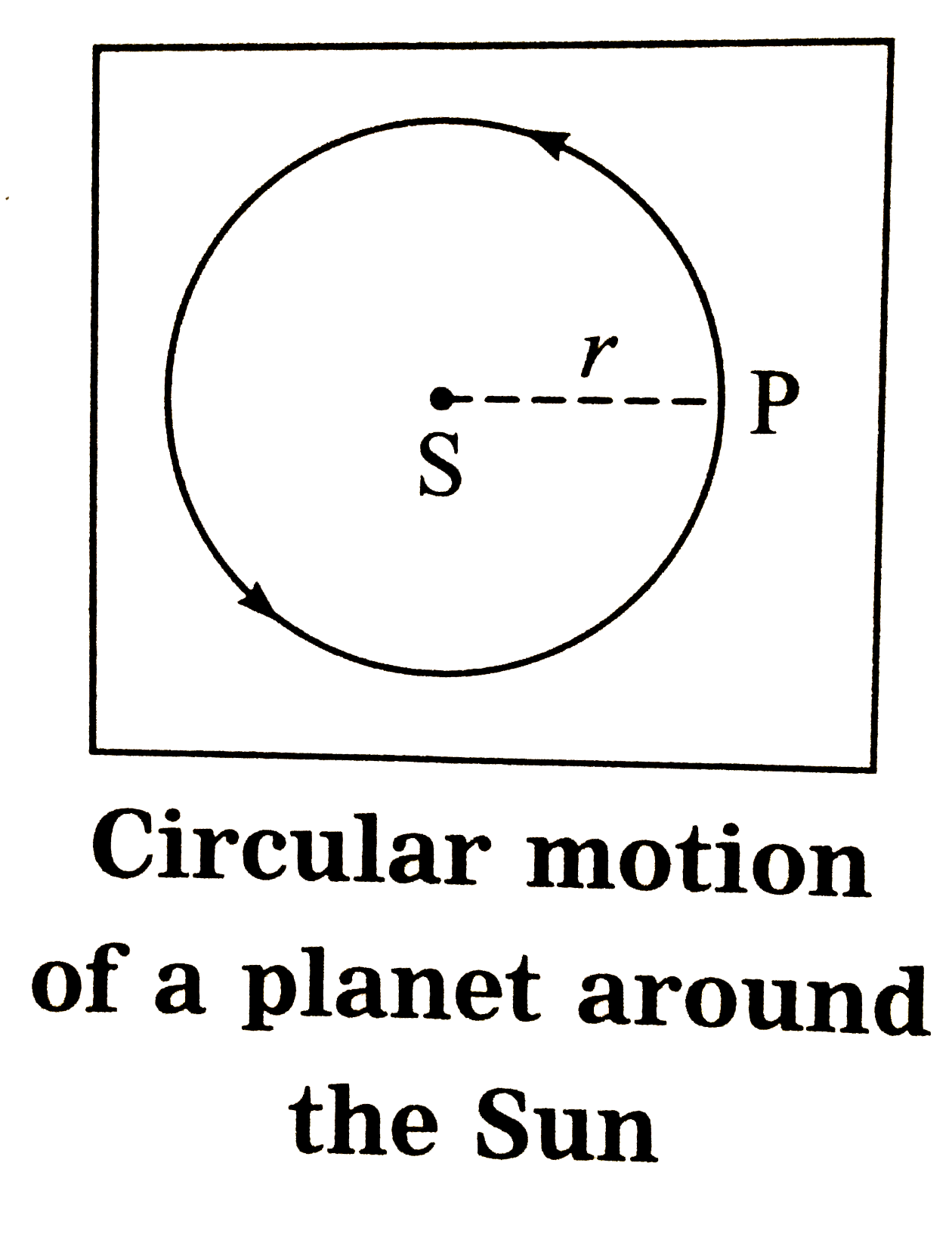Assume that the force of gravitation F∝1rn . Then show that the orbital speed in a circular orbit of radius r is proportional to 1r(n−1)/2 , while its period T is proportional to r(n+1)/2
Kepler's first law: The orbit of a planet is an ellipse with the Sun at one of the foci.
The adjoining figure shows the elliptical orbit of a planet revolving around the Sun. S denotes the position of the Sun.
Kepler's second law : The line joining the planet and the Sun Sweeps equal areas in equal intervals of time.
Area ASB=area CSD=area ESF.
Kepler's third law :
The square of the period of revolution of a plant around the sun is directly proportional to the cube of the mean distance of the planets from the Sun.
Thus , if r is the average distance of the planet from the Sun and T is its period of revolution , then,
T2∝r3, i.e. T2r3 =constant =K
For simplicity we shall assume the orbit to be a circle. In the adjoining figure, S denotes the poistion of the Sun, P denotes the position of a planet at a given instant and r denotes the radius of the orbit (≡ the distance of the planet from the Sun ). Here, the speed of the planet is uniform. It is
v=circumference of the circleperiod of revolution of the planet=2πrT
If m is the mass of the planet , the centripetal force exerted on the planet by the Sun (≡ gravitational force), F=mv2r
∴F=m(2πr/T)2r=4π2mr2T2r=4π2mrT2
Accordign to Kepler's third law,
T2=Kr3
∴F=42mrKr3=4π2mK(1r2)
Thus, F∝1r2 as 4π2mK is constant in a particular case.


Topper's Solved these Questions
- LAWS, RULES, UNITS AND DEFINITIONS BOOK - NAVNEET PUBLICATION - MAHARASHTRA BOARDCHAPTER - LAWS, RULES, UNITS AND DEFINITIONS EXERCISE - Periodic Classification of Elements
6 Videos
- LAWS, RULES, UNITS AND DEFINITIONS BOOK - NAVNEET PUBLICATION - MAHARASHTRA BOARDCHAPTER - LAWS, RULES, UNITS AND DEFINITIONS EXERCISE - Chemical Reactions and Equations
20 Videos
- HEATBOOK - NAVNEET PUBLICATION - MAHARASHTRA BOARDCHAPTER - HEATEXERCISE - NUMERICAL PROBLEMS FOR PRACTICE
12 Videos
- LENSESBOOK - NAVNEET PUBLICATION - MAHARASHTRA BOARDCHAPTER - LENSESEXERCISE - Numerical Problems For Practice
20 Videos
Similar Questions
If a planet is revolving around sun in circular orbit with force F ∝ r−52, where r is radius, then square of the period is proportional to
View SolutionSuppose gravitational pull varies inversely as nth power of the distance. Show that the time period of a planet in circular orbit of radius R around the sun will be proportinal to R(n+1)/2
View Solution
Knowledge Check
The period of a satellite in a circular orbit of radius R is T. The period of another satellite in circular orbit of radius 4 R is :
A4 TBT/4CT/8D8 TA planet is revolving around a star in a circular orbit of radius R with a period T. If the gravitational force between the planet and the star is proportional to R−3/2, then
AT2∝R5/2BT2∝R−7/2CT2∝R3/2DT2∝R4If the gravitational force were F∝1Rn, then the time period of a planet around the sun T will be proportional to
AR−nBR(n−1)2CR(n+1)2DRn
The time period of a satellite in a circular orbit of radius R is T. The period of another satellite in a circular orbit of radius 9R is :
View SolutionSuppose the gravitational force varies inverseley as the nth power of the distance. Show that the time period of a planet in circular orbit of raidus r arount the sun will be proportional to rn+1/2.
View SolutionThe period of a satellite in a circular orbit of radius R is T, the period of another satellite in a circular orbit of radius 4R is
View SolutionSuppose the force of gravitation is inversely proportional to the cube of the radius of circular orbit in which satellite is revolving then its time period is proportional to
View SolutionA particle is moving with a uniform speed in a circular orbit of radius R in a central force inversely proportional to the nth power of R. If the period of rotation of the particle is T, then :
View Solution
